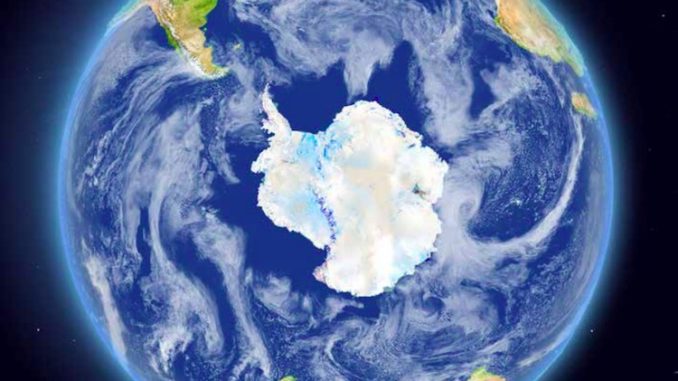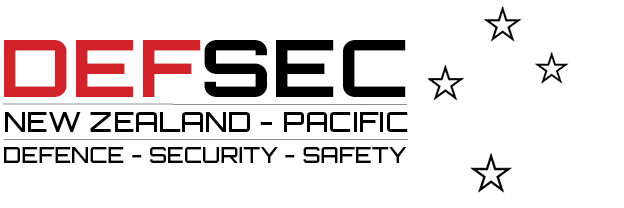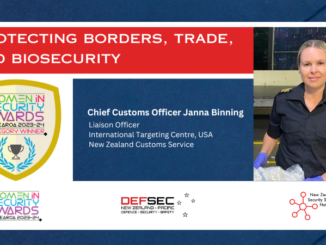
Dr Germana Nicklin of Massey University’s Centre for Defence and Security Studies considers the vexed issue of border management in Antarctica as interest in and tourism to the polar continent trend upward.
Antarctica is not the most obvious place about which to consider border management. Getting there is difficult and expensive, there are almost no permanent residents, and there is no commercial trade (recognised by the World Trade Organisation with a zero tariff).
Crime, including smuggling, is almost non-existent although there is illegal, unreported and unregulated fishing in the maritime zones of Antarctica.
Flows to and from Antarctica involve two categories of people – the transporting of long stayers – researchers and support people who will be living on the continent for several months, and the supplies to sustain them – and tourists, who visit for short periods of time.
This article argues that Antarctica and border management is worthy of study for several reasons. First, there are no Antarctic ‘borders’ in the usual meaning of the word. Antarctica is governed collectively, but the Antarctic Treaty that established the collective also allows pre-existing territorial claims to stand, while at the same time giving them no status within the Treaty.
Seven of the signatory countries – the United Kingdom, Chile, Argentina (whose claims overlap), Norway, Australia, France and New Zealand claim portions of the Antarctic continent as their state territory, though these claims are generally not recognised by other Treaty signatories. This creates a tricky situation in which reference to Antarctic territory and borders cannot be comfortably accommodated because of the association between borders and state territory.
As a result, the word ‘border’ is not to be found anywhere in the Antarctic collective governance system. What is the impact of a lack of ‘border’ on the collective governance? Secondly, the collective governance body, the Antarctic Treaty Consultative Meeting (ATCM), has developed a system for managing the flows to and from Antarctica that is almost completely separate from regular state border management systems. What are the benefits and risks of this arrangement?
Thirdly, the Antarctic Treaty System, which consists of the Antarctic Treaty and several protocols and conventions, is coming under pressure from dynamics such as increasing human activity on the continent, geopolitical jostling, and the impending effects of climate change. Can state border management policies and practices inform the Antarctic Treaty System’s response to these pressures?
The rest of this article discusses these three interrelated questions in more detail.
Access, not border, management
The Antarctic Treaty has objectives of peace and science for any human activity on the continent, and protecting the environment was added explicitly in the 1991 Environmental Protocol. Managing flows to and from Antarctica with these objectives is quite different from state objectives for managing border flows, which are commonly about protecting the state from criminal and other harms and growing the economy through trade and tourism.
Thus, rather than ‘border management’, a more acceptable term for managing Antarctic flows could be ‘access management’.
Access management issues are dealt with in two forums – the ATCM, which establishes policies relating to access to Antarctica, and the Council of Managers of National Antarctic Programmes, which states as its purpose to “develop and promote best practice in managing the support of scientific research in Antarctica”. This includes logistics, although most of the guidelines of this group relate to operations on, rather than getting to and from, the continent.
This custom-made Antarctic access system appears to have worked well for 60 years. It is highly controlled, with a stringent application process for all persons wishing to spend time in Antarctica, and strict timeframes within which those applications can be made. In the same way, goods and equipment taken to Antarctica are strictly controlled.
Compared with state border management, Antarctic access management is very slow. This is due to the relatively small number of people allowed to access the continent at any given time, the need to make sure those people are properly briefed on the rules and equipped for both safety and protection of the continent.
Each of the five gateway states deals with different access dynamics. Ushuaia in Argentina and Puentas Arenas in Chile provide access to the northern-most tip of Antarctica known as the Antarctic Peninsular. Ushuaia is primarily a tourist gateway; Puentas Arenas primarily transports scientists, their equipment and support to the continent, although some tourist vessels also depart from there.
Cape Town in South Africa, Hobart in Australia and Christchurch in New Zealand are also primarily science and logistics gateways. However, small numbers of tourist vessels depart from these states also.
A thin thread connects Antarctic access management with state border management. Foreigners entering and exiting the relevant gateway country on their way to and from the Antarctica gateway port are processed at that country’s border. Travel from the gateway port to Antarctica is treated as domestic.
Research on New Zealand’s practices has revealed that border agencies attribute a high level of trust to the approval processes for accessing Antarctica. The relative absence of security incidents suggests this trust is not misplaced.
One area receiving growing attention in the ATCM is the increase in tourism – from 6,704 for the first tours in 1992-3 to 51,707 in 2017-18, and still growing. In recent years, the number of tourist landings has been steadily increasing, while cruise ship tours without landings are decreasing.
Most tourism occurs on or near the Antarctic Peninsular, leaving from Ushuaia in Argentina, but there are also growing numbers of tourist vessels sailing from New Zealand and Australia. The ATCM sets the rules for tourist operators, supplemented by guidelines established by the International Association of Antarctica Tour Operators (IAATO), but not all tourist operators are members of this Association.
Border management approaches?
Unlike state border management systems, the Antarctic access management system does not involve assessing the risks of flows of vessels, goods and people to and from the continent beyond those applying to the National Antarctic Programmes. Two groups that fall outside this process are tourists and yachts.
Individual tourists are not screened for risk and yachts are not part of the IAATO system. Growing tourism, and a growing number of yachts present risks to Antarctica not just to the environment but also because of the potential for incidents requiring responses from nearby sovereign states.
For example, the number of individual yachts travelling to the Antarctic Peninsular increased from 33 to 45, or 36 percent, between 2016-17 and 2017-18. Nine of them, or 20 percent, were unauthorised. In other words, they had not gained approval from Antarctic governance processes to sail in Antarctic waters or land on the continent.
Unauthorised arrivals in state border management systems are not uncommonly associated with smuggling and other criminal activity. While this may not be the case for Antarctic unauthorised arrivals at the moment, the salient point is that the ATCM states have limited information and systems with which to get early advice of these arrivals and to assess the risks they might pose before they arrive.
Without a deep examination of different participating states’ specific practices, the full impact of a lack of border narratives in the Antarctic Treaty System can only be inferred. However, in New Zealand, which is one of the five access points to Antarctica, state border agencies are not involved in policy discussions relating to access management for Antarctica.
Assuming this applies across all five Antarctic gateways, it means that border management competencies, such as goods classification, identification and inspection, and risk management networks are not being utilised in the Antarctic Treaty System.
This absence is relevant in the context of the pressures on that System. The current access management system is designed for summer access to Antarctica, with very few vessels and flights travelling there in the winter months. As mentioned earlier, this system depends on having time to process applications and prepare for the logistics of travel.
What it is not well-designed for is unexpected events other than search and rescue, which is accommodated. The assumption with the access management system appears to omit the possibility of criminal activity (excepting illegal, unreported and unregulated fishing), which is reflected in the absence of systematic data and trend analysis.
As access speeds up, Antarctic governance would do well to consider the methods used for state border management, and the potential benefits of working more closely with state border agencies. What will be needed for this to happen, though, is some way for the Antarctic actors to accommodate border narratives into the Antarctic Treaty System in a way that doesn’t upset the delicate topic of territory and its usual association with claimant states.




